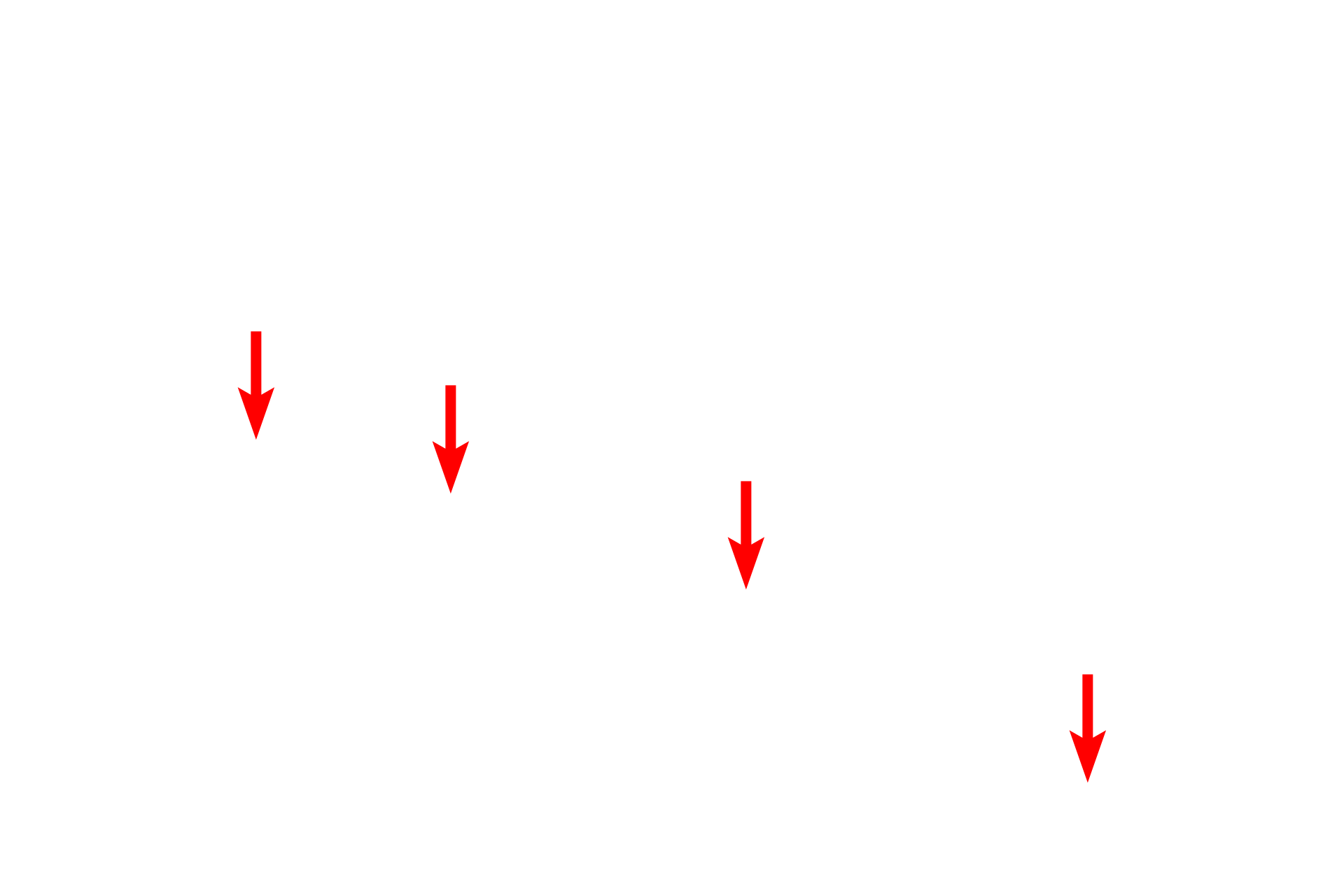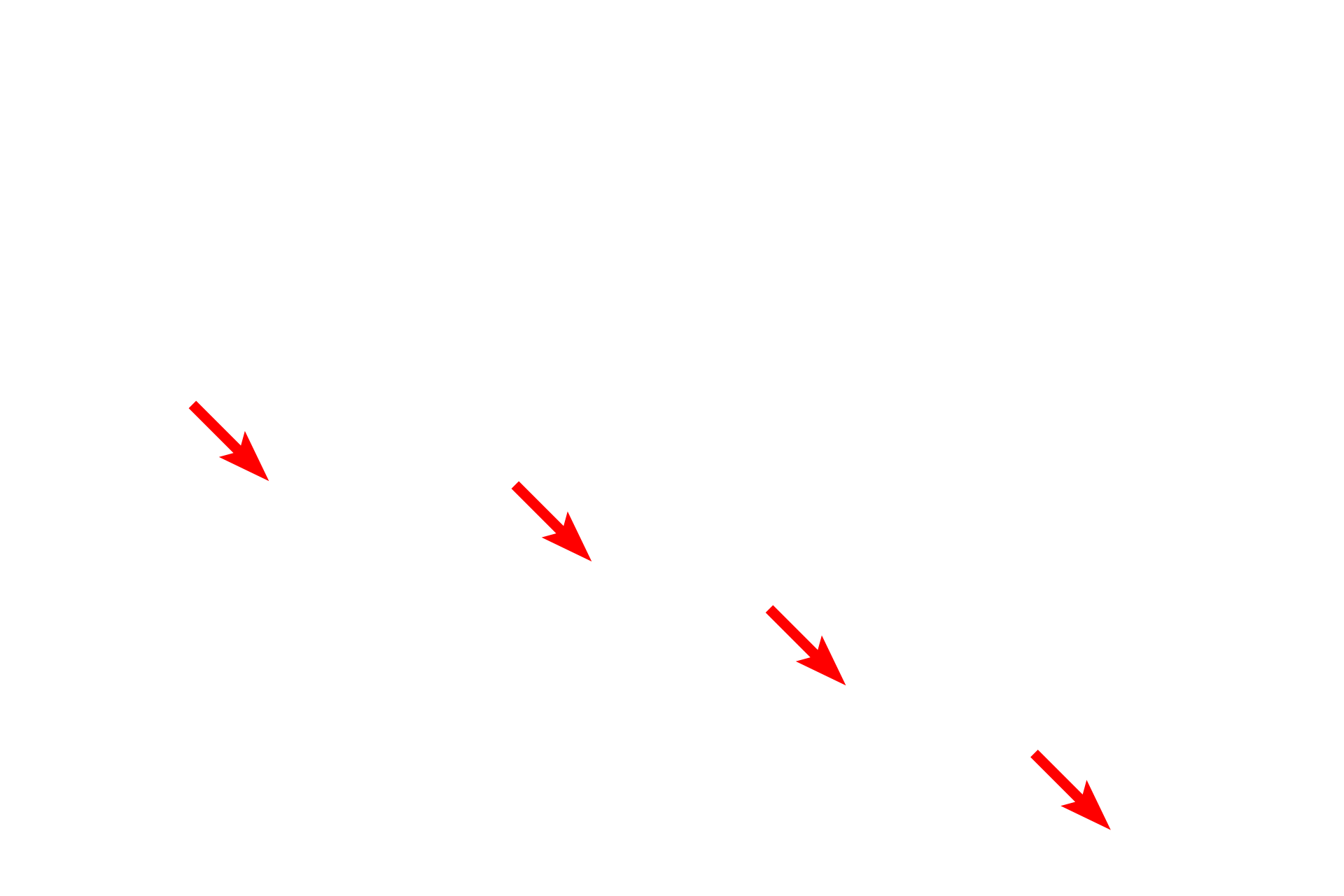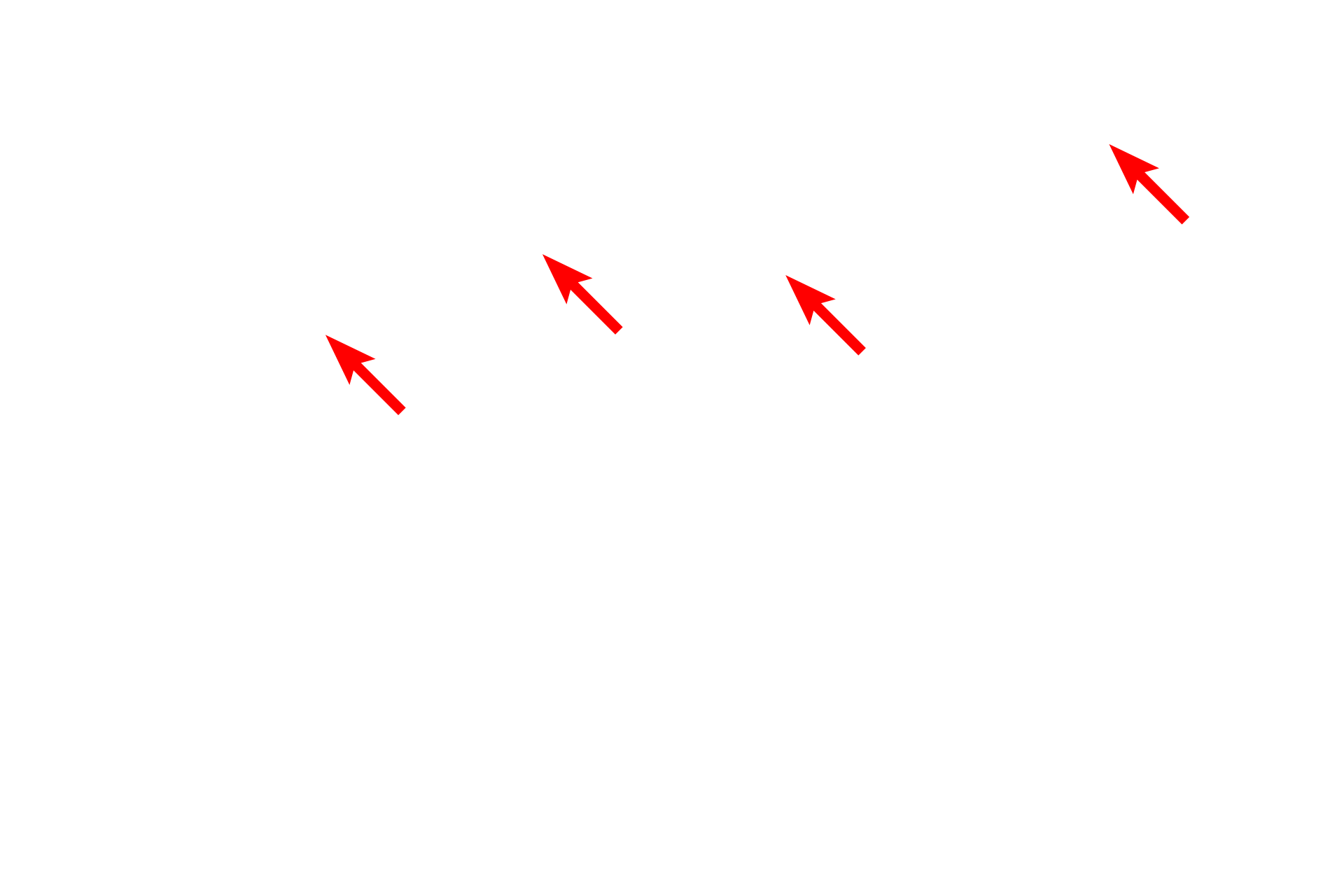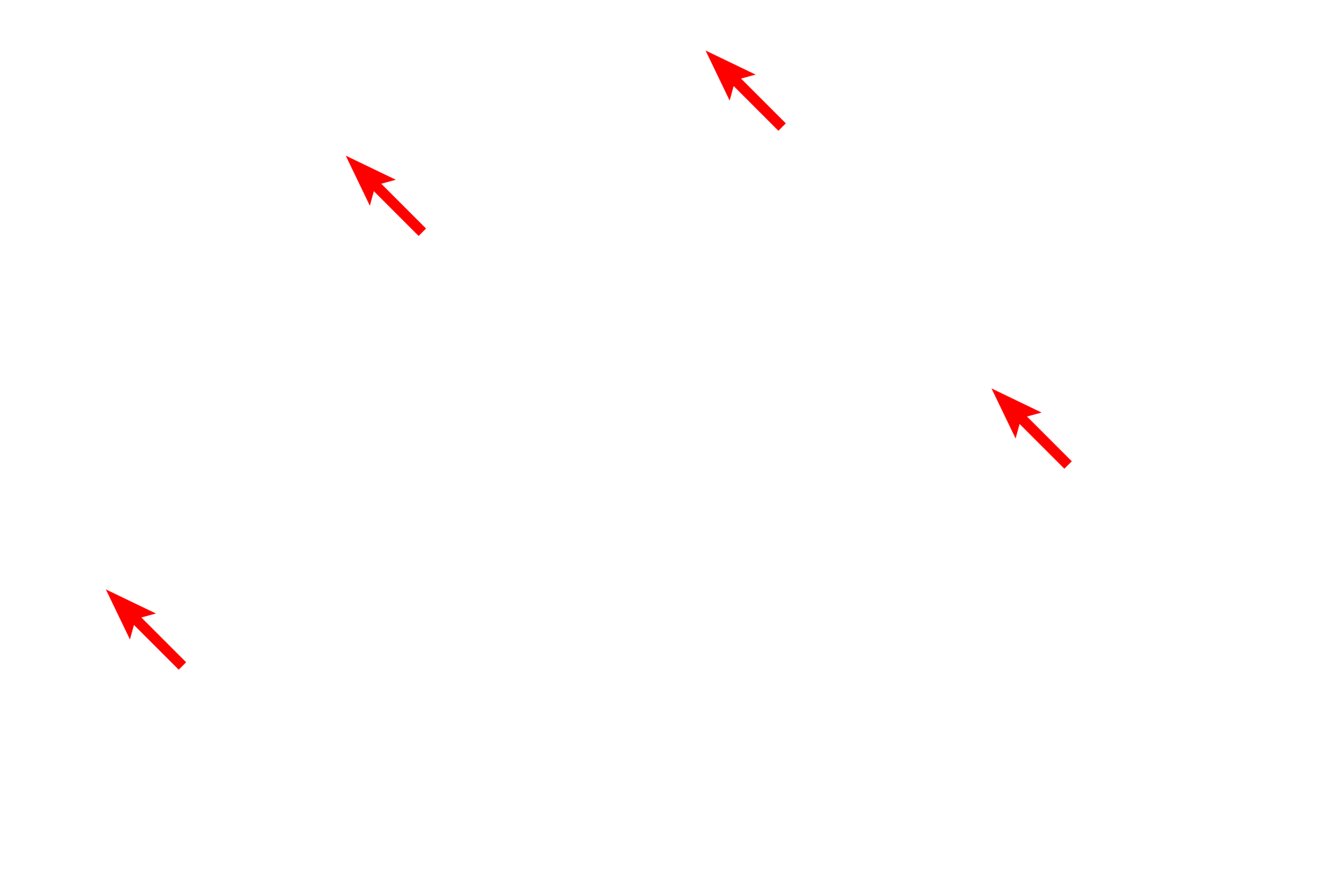
Ependymal cells
The ependyma consists of a low columnar, frequently ciliated, epithelium lining the ventricles and central canal of the CNS. The cilia facilitate the movement of the cerebrospinal fluid (CSF) which occupies the spaces lined by the ependymal cells. In some regions the ependyma is modified to form the choroid plexus which is highly folded and extends into the ventricle and produces the CSF. The cells have a prominent brush border of microvilli. 1000x

Ependymal cells
The ependyma consists of a low columnar, frequently ciliated, epithelium lining the ventricles and central canal of the CNS. The cilia facilitate the movement of the cerebrospinal fluid (CSF) which occupies the spaces lined by the ependymal cells. In some regions the ependyma is modified to form the choroid plexus which is highly folded and extends into the ventricle and produces the CSF. The cells have a prominent brush border of microvilli. 1000x

- Ependymal cell nuclei
The ependyma consists of a low columnar, frequently ciliated, epithelium lining the ventricles and central canal of the CNS. The cilia facilitate the movement of the cerebrospinal fluid (CSF) which occupies the spaces lined by the ependymal cells. In some regions the ependyma is modified to form the choroid plexus which is highly folded and extends into the ventricle and produces the CSF. The cells have a prominent brush border of microvilli. 1000x

- Cilia
The ependyma consists of a low columnar, frequently ciliated, epithelium lining the ventricles and central canal of the CNS. The cilia facilitate the movement of the cerebrospinal fluid (CSF) which occupies the spaces lined by the ependymal cells. In some regions the ependyma is modified to form the choroid plexus which is highly folded and extends into the ventricle and produces the CSF. The cells have a prominent brush border of microvilli. 1000x

Choroid plexus cells
The ependyma consists of a low columnar, frequently ciliated, epithelium lining the ventricles and central canal of the CNS. The cilia facilitate the movement of the cerebrospinal fluid (CSF) which occupies the spaces lined by the ependymal cells. In some regions the ependyma is modified to form the choroid plexus which is highly folded and extends into the ventricle and produces the CSF. The cells have a prominent brush border of microvilli. 1000x

- Brush border
The ependyma consists of a low columnar, frequently ciliated, epithelium lining the ventricles and central canal of the CNS. The cilia facilitate the movement of the cerebrospinal fluid (CSF) which occupies the spaces lined by the ependymal cells. In some regions the ependyma is modified to form the choroid plexus which is highly folded and extends into the ventricle and produces the CSF. The cells have a prominent brush border of microvilli. 1000x

Capillaries
The ependyma consists of a low columnar, frequently ciliated, epithelium lining the ventricles and central canal of the CNS. The cilia facilitate the movement of the cerebrospinal fluid (CSF) which occupies the spaces lined by the ependymal cells. In some regions the ependyma is modified to form the choroid plexus which is highly folded and extends into the ventricle and produces the CSF. The cells have a prominent brush border of microvilli. 1000x

CSF space
The ependyma consists of a low columnar, frequently ciliated, epithelium lining the ventricles and central canal of the CNS. The cilia facilitate the movement of the cerebrospinal fluid (CSF) which occupies the spaces lined by the ependymal cells. In some regions the ependyma is modified to form the choroid plexus which is highly folded and extends into the ventricle and produces the CSF. The cells have a prominent brush border of microvilli. 1000x
 PREVIOUS
PREVIOUS